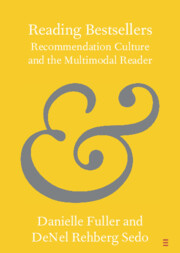Element contents
Reading Bestsellers
Published online by Cambridge University Press: 11 April 2023
Summary
- Type
- Element
- Information
- Online ISBN: 9781108891042Publisher: Cambridge University PressPrint publication: 27 April 2023
References
- 17
- Cited by

